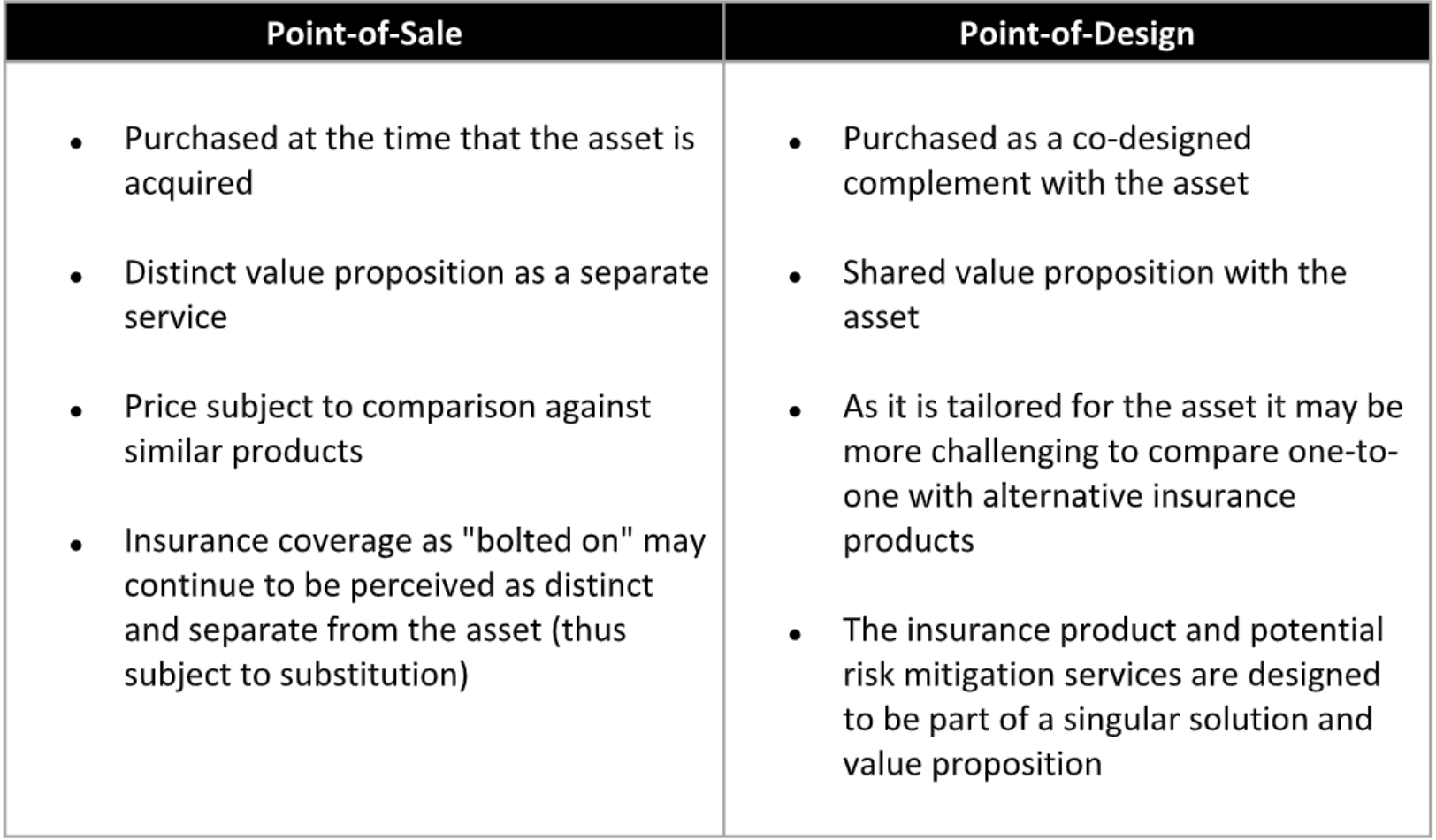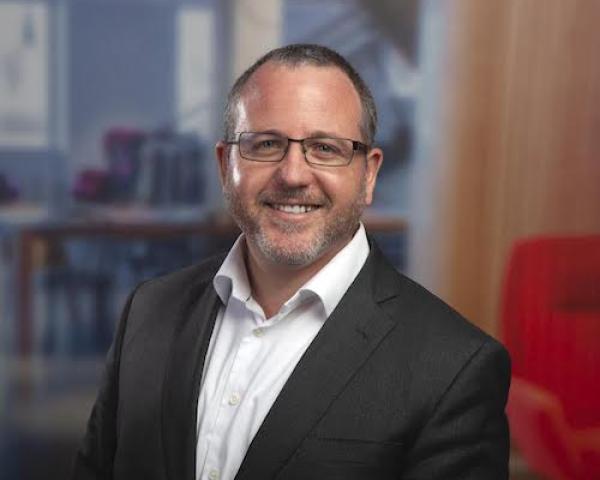Listen Now:
Paul Carroll
Hi, I'm Paul Carroll. I'm the Editor-In-Chief at Insurance Thought Leadership. I'm joined today by Dr. Michel Leonard, who is the chief economist, among other things, at the Insurance Information Institute, the Triple-I. We have these quarterly conversations that I look forward to so much, about the state of the economy and how it plays out in insurance. Today, we're going to eventually get into a conversation about cities and their future; and how the hybrid work model or non-hybrid work model and so forth affects things, how mobility redesign affects things and so forth. But I figure we can get started by talking about inflation and the economy and get your update. So, where do you think we are right now, and where are we going to be in the next quarter?
Dr. Michel Leonard
Paul, it's always a pleasure to speak with you. And I look very much forward to these, as well. I like the mixture of the hard data and so forth, and then trying to adjust the crystal ball, but also think about the demographic and social components of this. So, we do not expect that there will be a recession in 2023. Nor in 2024. On the contrary, all of the indicators indicate that we're heading to a recovery, both overall and in insurance, and we'll get to that, as well.
But the issue here that keeps me a bit awake at night is the fact that, a year ago, economists kind of said, all of our models are telling us that we're going to recession, and this is what should happen. Well, sometimes it doesn't happen according to the models. And that's exactly how it unfolded; we did not have a recession.
But because we expected it so much, companies, especially in corporate America, cut down significantly on capital investment and capital spending, and that really slowed down the overall economy. In insurance, it slowed down the underlying growth for commercial real estate, for commercial multi-peril and for commercial auto.
I'm hoping that, this time around, we end the year around 2% or 3% [GDP growth]. But the issue here is Q3 will probably be lower than Q2. We don't expect [growth] to have to go negative, though we could go negative, Hopefully, Q4 is much stronger, which has happened in the past. So, the issue is that we're going to have a weaker Q2/Q3, and how weak it is will [affect] the rest of the year. But [we’re still] going to have a positive year at the end….
But I'm concerned about what happened in Q1 last year. You know, sometimes just predicting things makes them happen because of the reflexivity there, like [investor George] Soros used to call it; you expect things, you act accordingly, and then you bring about those things.
Carroll
I've heard people talk about the Goldilocks economy or the Goldilocks recovery: You know, not too hot, not too cold, just right. As we were talking in advance of this, you used a term I had not heard before: the Godot economy. And I know how much you'd like that play, right? I'm just kidding; you told me you hated it. But it does seem like we are in sort of a Godot economy, where we've been waiting so long for the recession, and it's just not coming.
Leonard
You know, I'm an economist and a data scientist. And a lot of times, economics focuses on models that allow us to understand relationships…. Our forecasts are about understanding the way the different blocks come together. Data science is really focused on the forecasting. When we look at the data without a model, it does not, as I was pointing out, lead to a recession. But I want to talk a bit about employment, because when we think of the timing here, that's the big element.
Yes, employment has been resilient. But there's a whole narrative right now in the financial press, and we all kind of bought into it, that the American workers are doing great. We're doing well, but we're not doing great. And then if we scratch beneath the surface, we're not doing that well.
Yes, we've remained employed. So [regardless] of monetary policy tightening, regardless of capital expenditures being cut… we didn't see mass layoffs. But when we get to this argument that American workers have all this bargaining power, I'm not seeing it in the evidence. I'm not seeing it in wage increases. Yes, we had a good wage increase, 4% or something like that. But inflation was above that, so we all have less purchasing power.
Decades ago, three or four decades ago, 80% to 90% of corporate America provided cost-of-living increases. We didn't see that… as a pay raise. It was a cost-of-living increase. Today, there's only about 10% of companies that do that. And quite often it's sold as a pay increase.
So, yeah, the American worker is doing well; he or she is employed. But we have to think about that…. There’s some weakness, and I think it's really going to be directly impacting… the strength of the recovery.
Once more people start commuting again -- you and I have talked about how that is a big expense, especially if you've moved to the exurbs as opposed to the suburbs. From the city, you're going to have to pay for the subway, and the suburban trains, or you're going to have to drive more and spend more on that. So there's not going to be as much disposable income. One of the reasons this contraction has felt good is that we have had this disposable income. Inflation was really high, but it got kind of compensated, though not really from food. I was in New York a few weeks ago, and I was just shocked. An entree that would have been -- and I am using New York prices, so not that relevant everywhere -- but an entree that would have been $15 to $20 is now $30 to $40. Even in the best restaurants, I don't remember seeing the number four in front of the [price]. And that's the same with a TGI Fridays and the chains: What used to be $10 to $15 is now $25. For a family of four going out on a Friday, that's already $100 to $150. That money, if you add it up, directly correlates with the less spending on commuting. So, let's wait to see how that impacts disposable income and disposable spending, once we recover going into 2024.
Carroll
You started to talk about the recovery. How do you see it playing out? I mean, you've said Q3 is likely weaker than Q2, Q4 will likely be stronger, maybe a lot stronger, depending on how weak Q3 is. In terms of the numbers, but also in terms of the specific parts of the economy and sort of how they start firing on all cylinders again, how do you see the recovery developing?
Leonard
…There's so much uncertainty around what the numbers are. As economists, we normally go back and we [change] decimals; right now, we're moving digits, like the actual percent. Q3: Don't get alarmed if it's weaker. The weaker it is, the stronger Q4 will be. The closer [growth is in Q3] to where we are right now, the flatter it will be to the end of the year. We end the year around that 3% to 4%. I think that's a good range, basically on target for the Fed.
When does it start getting better? It starts getting better in Q1 for the wider economy. The Fed needs to go and start signaling that it’s easing. This is one of those cases where it is best if we "don't fight the Fed." There are some things in economic theory that work, and that's one that works. What does that mean? It means that the Fed will start signaling that it will ease, and it already has…. And then you're going to see, probably in Q4, companies starting to plan on investments, hiring and so forth, which means that, by the first half of next year, we're starting to see a real recovery…. And the stock market will probably recover….
What does all this mean for insurance policy? Insurance [growth] normally lags [the overall economy] by about two quarters. Right now, we're actually doing better. Our inflation is decreasing faster, our growth is picking up. Our numbers indicate that, going into next year, [inflation] in our replacement costs are going to be below 2%, while overall inflation will be around 2% to 2.3%…. We're going to be in a good place from an insurance standpoint…. Again, everything is about the Fed. Not the rate decisions, but the telegraphing….
So, again, by 2023 Q4, think economy recovering overall; for mid-year 2024, think insurance really picking up in terms of underlying growth by the end of 2024 Q4, and 2025 being the perfect alignment of economic indicators for peak insurance growth.
Carroll
That sounds sounds good to me. So let's talk about cities a little bit. You and I talked a bit about this before, and you mentioned the movement to the exurbs and so forth from the suburbs and how the mix changes. It seems to me that the return to work in offices is slow enough that that's going to cause a big change in cities. Boston is offering a pilot program that gives companies 75% off their taxes if they turn an office building into a residence. And I think there just are lots of things going on that are going to shift away from office buildings and have all sorts of ripple effects. And there's some other things going on, as well. What do you see happening in cities?
Leonard
That thing about Boston, I didn't know that. But I do know that there was kind of a similar conversation with WeWork, [maybe] moving WeWork into communal living or just outright apartments and lofts because they tend to be in downtown areas. Now, from an insurance standpoint, commercial property, commercial multi-peril, that's a big question for our industry. And so far, the fact that there's been fewer people at work… has been good for [workers’ comp] lines…. Rents haven't been cut, and therefore a lot of the value of the property hasn't adjusted, so it hasn't impacted our premium and premium growth as much as one would expect….
Now, booms and busts, that's the way the real estate market works. And it allows for great building, overbuilding. It allows for beautification and so forth. And at one point, supply and demand come back into play and create a bust; the bigger the boom, the bigger the bust. What's happening right now is that the bust process is being delayed, and it is being delayed for something fairly unusual. We're not seeing cuts in rents.
One of the reasons is, as you pointed out, a Waiting for Godot [or even] a Re-Waiting for Godot, and Godot is not going to show up. We don't think that the American worker will go back [to cities] in the same numbers…. We did a survey of our members, and about 80% of them, or something like that, for three days a week are not in the office. Almost all of them have at least one day out of the office. And that has stabilized. The insurance industry was willing to go virtual, but [people] really resisted coming back to the office….
Once there is less uncertainty around [the number of people returning to offices], the bankruptcy process will start. And at that point, there'll be that supply and demand pricing and rent changes that will allow for folks who want to go back. And that's an opportunity.
Carroll
That all makes sense. I'm thinking of a nephew of mine who's a commercial real estate broker in the Washington DC/Baltimore area. He's worried about a death spiral for cities. If people don't go back to work, then you don't have as many people going to the bars after work or going to the restaurants. And maybe the restaurants are jacking up prices because they know Michel is coming, or hope lots of Michels are coming, and they're going to milk them for as much as they can. If the restaurants aren't thriving, then the young people aren't going there. And then people start leaving the city and so forth.
I certainly don't think we're there yet. But I do think that that's a long-term trend to watch.
Another one I've mentioned is this idea of mobility. I've written a fair amount about driverless cars, in particular, and about transportation, in general. If you go back 100 years, cities really were designed for cars. And there's an awful lot of space in cities, just street parking, for instance, that is eaten up by cars. These days, it seems like some cities are rethinking their design. For instance, it costs you an awful lot of money these days just to bring a car into New York City, and that is changing the dynamics there. I think cities are going to redesign things more for people and less for cars. You'll wind up with this mix of driverless cars, taxis, regular cars, scooters, pedestrian walkways and so forth. If you look out, certainly 10 to 20 years, there are going to be very significant changes to cities.
Leonard
A few things there that I want to unpack. The transformation of cities is expensive. For almost 30 years, we beautified cities, but we didn't invest in highways and so forth, with some exceptions. But now we have all the money from Build Back Better coming in. And that money is starting to show in New York and other cities; highways are getting better, etc. So that's going to accelerate this shift….
I can see how this transformation will lead to a different kind of city. And I think what's important here, Paul, is to keep in mind that we've seen in the last 30 years what I call the theme park-ification of cities, also referred to as gentrification. We've made cities beautiful, but we also took away the reality of cities, with urban areas that support the industrial component having been outsourced to the exurbs. The cycle of cities, with immigrants coming in and having opportunities to open a small store, a lot of that has disappeared. I was reading recently that most of the immigrant-owned stores, the small businesses and the new businesses, are now in malls in suburbs, because price-wise it makes more sense.
Once you take away this revival, this transformation, this rejuvenation of a city, you'll also take away a lot of what makes a lot of folks willing to pay the rent, willing to spend as much. You get to a point where I'm not going to the city because, with inflation, restaurants are very expensive. I used to like music, but music is really not happening, partly because bars have been closed or they're too expensive…. Young people say, well, I can have a family or I can be in a city.
I'm concerned about how fast the change happens. I think there's an opportunity there to see a new kind of city…. And I mean transformation. There's an opportunity to see the emergence of a new approach, and mobility can be a part of that, along with more open spaces.
You know, I was doing a paper recently on the ability to have green spaces, the ability to have urban forests, the removing of cars in favor of being able to walk around; these are very attractive to corporate investment. There's a good value proposition there for companies. What made the corporate campus in the suburbs so attractive in the ‘60s and in the ‘70s, was ease of life, the fact that it was affordable. The exurbs are not that affordable anymore, nor are the suburbs. So this cycle will come about, and if we're willing to think differently, about more diversity, about cities that are less gentrified, [we can have] cities that are more alive.
Carroll
I agree totally. I'd suggest that, if people are interested in following this sort of thing, there are a couple of model city projects they could watch. One is in Saudi Arabia, where they're spending something like a trillion dollars to build a city of the future. It sounds a little crazy to me. But they're spending a lot of money on it, and there could be some interesting ideas coming out of that. There's also a much smaller effort by Toyota, which is doing something on the slopes of Mount Fuji. That will be quite interesting. It's really trying to reimagine how a city could be designed… for people rather than just for the transportation.
Leonard
Paris is the ultimate example of gentrification and of urban flight and all the layers to that, But the city has been reinventing itself. Paris has always had a lot of trees, but they've also opened up the Seine to swimmers. I have not been in Paris for a while, but Paris has become a big model that the World Economic Forum has been discussing. Urban forest, urban trees, it's better for health, it helps people live longer. Quality of life: Folks like to be next to that. That also becomes a driver of property prices…. Property next to green spaces in New York and in many other cities is some of the most expensive property. Many cities -- such as Paris, New York, cities on the West Coast, Mexico City -- are making a great effort in this area. Trying to bring urban forest is a way to make the cities more attractive. I think Vienna actually has a fantastic project from the ‘60s that featured some of those garden towers that we see.
Carroll
I spent a lot of time in Paris in the ‘80s, when I lived in Brussels. Paris is probably my favorite city in the world. I'll have to go back. I have not spent much time there in the last 10 years or so.
Leonard
It's the most beautiful city,
Carroll
I agree. It’s easier for you, though, because you speak French, whereas I speak pidgin French.
So this was great, as always. I really appreciate your taking the time. I would encourage people, as always, to follow you and the efforts of the Triple-I -- that is, iii.org. And then, of course, to check out InsuranceThoughtLeadership.com and sign up for the weekly newsletter, Six Things, in which I get into topics like this is often as I can.
Thanks, Michel.
Leonard
My last words, Paul, are going to be: Do not go see Godot. It's terrible.
Carroll
I've avoided it so far, and I will avoid it from now on.
Leonard
This was great. Thank you so much, Paul.





















